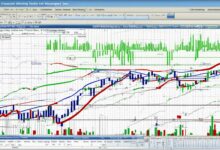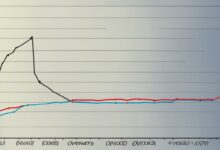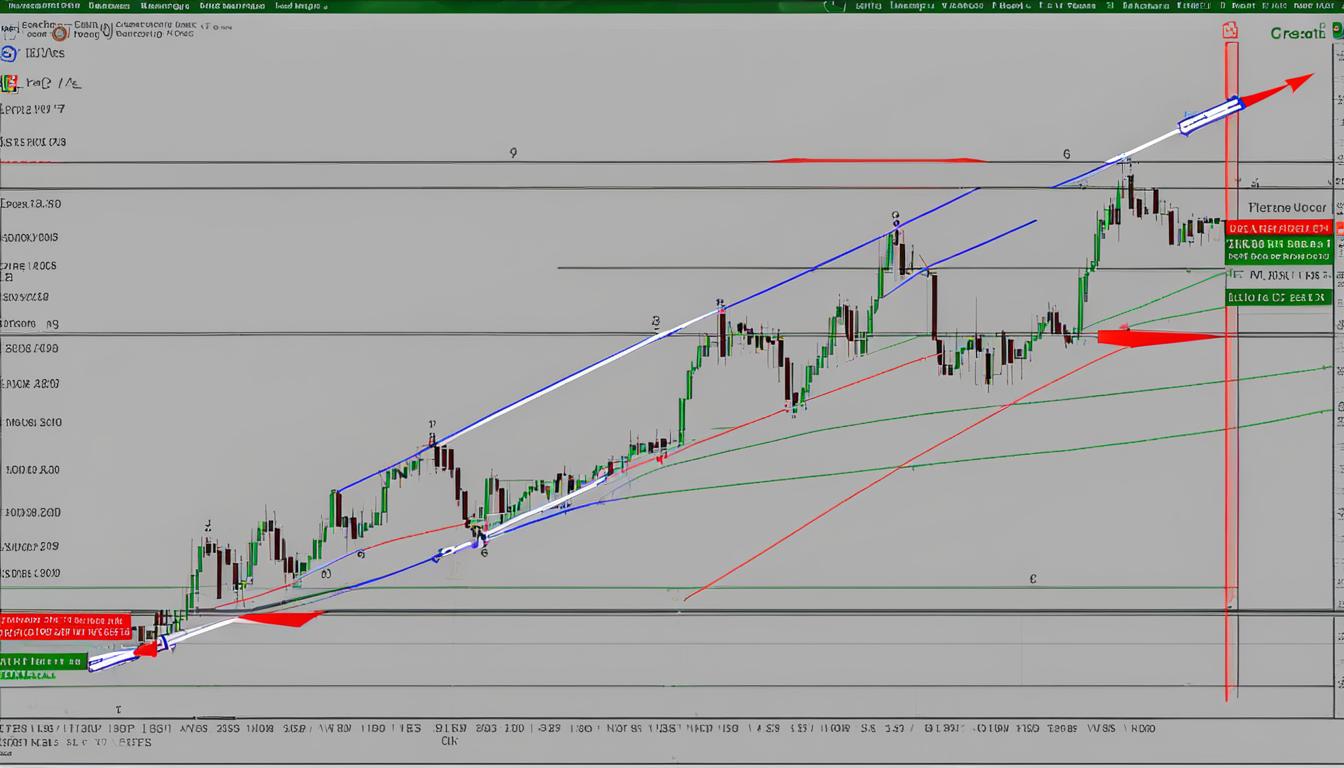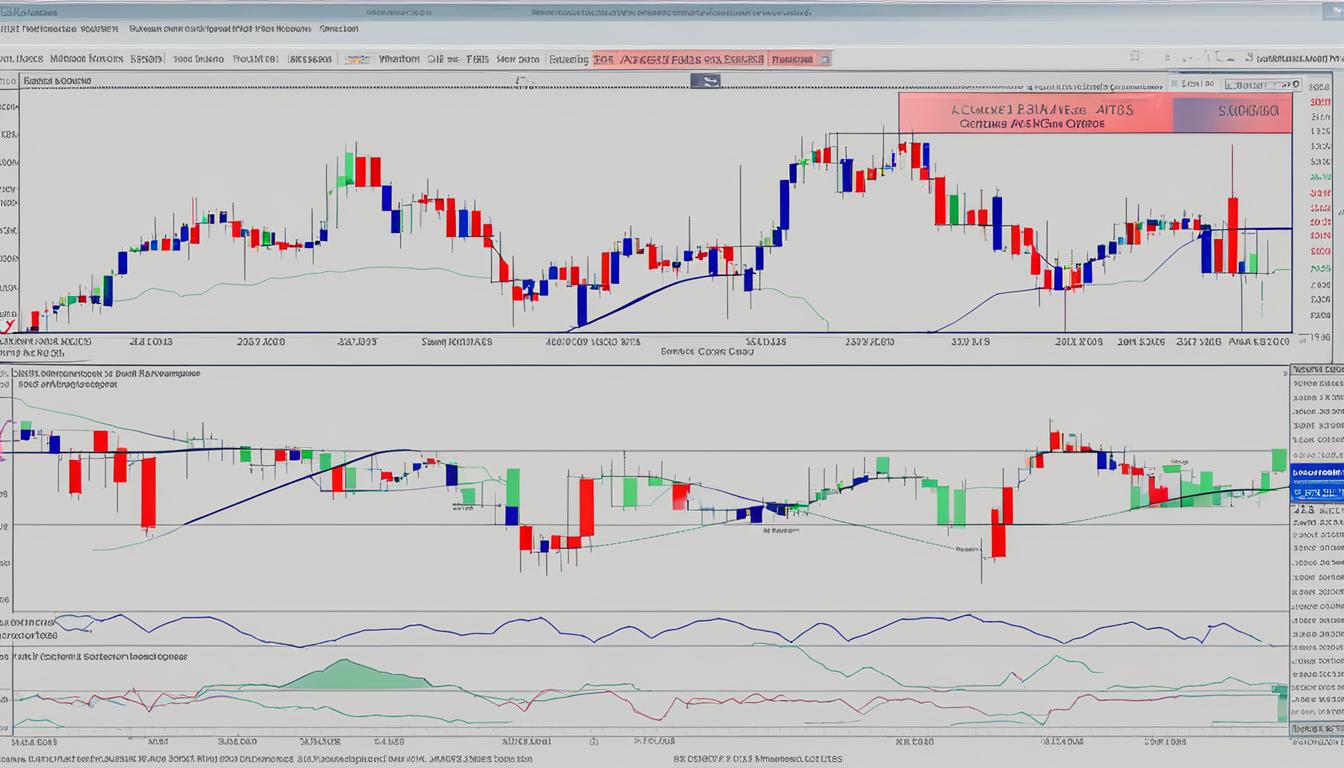Ready For The Market Turnaround: The Head and Shoulders Pattern
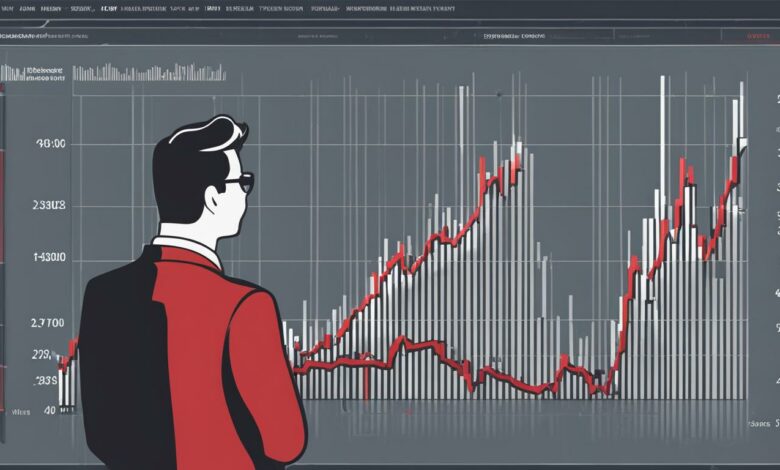
Welcome to our comprehensive guide on the head and shoulders pattern, a powerful chart pattern that can assist traders in identifying potential trend reversals in the market. In this article, we will delve into the key elements of this pattern, discuss strategies for trading it, and explore its effectiveness in predicting market turnarounds. Whether you are a seasoned trader or just starting out, understanding the head and shoulders pattern can be a valuable asset in your trading arsenal.
Key Takeaways:
- The head and shoulders pattern is a reliable chart pattern for predicting market turnarounds.
- It consists of three peaks (the head and shoulders) and a neckline.
- A break below the neckline confirms a bearish reversal signal.
- Traders can use technical analysis tools and indicators to identify and confirm the pattern.
- Additional indicators can be used in conjunction with the head and shoulders pattern for enhanced analysis.
Identifying the Head and Shoulders Pattern
The head and shoulders pattern is a powerful chart pattern that can help traders identify potential trend reversals in the market. By understanding the key elements of this pattern and how to identify it, traders can gain valuable insights into market dynamics.
To identify the head and shoulders pattern, traders should look for three distinct peaks on a price chart. The middle peak, known as the head, is the highest point, while the two surrounding peaks, called the shoulders, are lower. These peaks are connected by a neckline, which is a line drawn through the lows of the two shoulders.
It is important to note that the head and shoulders pattern can take different shapes, but the basic concept remains the same. Traders can use technical analysis tools and indicators to help identify and confirm the formation of a true head and shoulders pattern in the market.
The head and shoulders pattern is a valuable tool for traders, providing insights into potential trend reversals. By mastering the art of identifying this pattern, traders can enhance their trading strategies and make informed decisions in the market.
Key Elements of the Head and Shoulders Pattern
The head and shoulders pattern has several key elements that traders should be aware of when analyzing the market for potential trend reversals. These elements include the three peaks (head and shoulders) and the neckline. The volume also plays a crucial role in the formation of the pattern, while the significance of the neckline lies in its role as a support level and a confirmation point for the pattern.
When analyzing the head and shoulders pattern, it is important to consider the shape and positioning of the peaks. The middle peak, known as the head, should be higher than the surrounding peaks, which form the shoulders. This formation indicates a potential shift in market sentiment from bullish to bearish.
The volume can provide valuable insights into the strength of the pattern. Traders should look for a decrease in volume during the formation of the right shoulder compared to the left shoulder. This decrease in volume suggests a weakening bullish momentum and further supports the potential reversal indicated by the pattern.
“Traders often use the neckline as a level to set stops and profit targets.”
The neckline forms a horizontal line connecting the lows of the two shoulders. It acts as a support level that the price must break below to confirm the head and shoulders pattern. When the price breaks below the neckline, it serves as a signal that a potential downtrend may be imminent. Traders often use the neckline as a level to set stops and profit targets for their trades.
Key Elements of the Head and Shoulders Pattern:
- The three peaks (head and shoulders)
- The neckline
- The role of volume in the formation of the pattern
- The significance of the neckline as a support level
Understanding these key elements is essential for effectively identifying and trading the head and shoulders pattern. By analyzing the shape and position of the peaks, monitoring volume trends, and considering the significance of the neckline, traders can make informed decisions and potentially profit from trend reversals in the market.

Trading Strategies using the Head and Shoulders Pattern
When it comes to trading the head and shoulders pattern, there are several strategies that traders can employ to maximize their profits and manage potential risks. One common approach is to enter a short position when the price breaks below the neckline, as this confirms the bearish signal and suggests a potential downtrend. To manage risk, traders can place a stop-loss order above the right shoulder, protecting against any unexpected price movements.
Another strategy is to wait for a retest of the neckline as resistance after the breakdown. This provides an opportunity to enter a short position at a higher price, increasing the potential profit. Traders can set profit targets by measuring the distance from the neckline to the head and shoulders pattern and projecting it downward from the neckline. This allows them to identify potential areas of support where the price may reverse or consolidate.
Managing Potential Risks and False Breakouts
While the head and shoulders pattern is a reliable trend reversal pattern, there are risks involved, such as false breakouts. A false breakout occurs when the price briefly breaks below the neckline but quickly reverses back above it. To manage this risk, traders should closely monitor price action and volume. If the breakout lacks conviction and shows signs of weakness, it may be a false breakout.
Additionally, it is important to analyze market conditions and consider other technical indicators to confirm the pattern. By combining the head and shoulders pattern with other tools, such as moving averages or oscillators, traders can gain further confirmation and increase the accuracy of their trading decisions.
| Trading Strategy | Steps |
|---|---|
| Short Position | 1. Enter a short position when the price breaks below the neckline. 2. Place a stop-loss order above the right shoulder to manage risk. 3. Set profit targets by projecting the distance from the neckline to the pattern’s height. |
| Retest of Neckline | 1. Wait for a retest of the neckline as resistance after the breakdown. 2. Enter a short position at a higher price. 3. Set profit targets using the same projection method as the short position strategy. |

“The key to successful trading using the head and shoulders pattern is proper risk management and confirmation through other technical indicators. By combining these strategies, traders can increase their chances of making profitable trades while mitigating potential risks.”
The Effectiveness of the Head and Shoulders Pattern in Predicting Market Turnarounds
When it comes to predicting market turnarounds, the head and shoulders pattern is often regarded as one of the most effective chart patterns. Its reliability lies in its ability to identify potential trend reversals, specifically bearish reversals. By observing the three distinct peaks – the head and shoulders – and the break below the neckline, traders can gain valuable insights into the market’s future direction.
The effectiveness of the head and shoulders pattern, however, depends on various factors. Firstly, the strength of the current trend plays a significant role. The pattern tends to be more reliable when it forms after a strong uptrend, indicating a potential shift in market sentiment. Additionally, overall market conditions should be considered. The pattern is more likely to be accurate in a trending market rather than during periods of consolidation or low volatility.
While the head and shoulders pattern is a powerful tool, it should not be relied upon in isolation. It is important to use the pattern in conjunction with other technical analysis tools and indicators to confirm the potential trend reversal. Combining the pattern with indicators such as moving averages, trend lines, and oscillators can provide further validation and enhance the accuracy of predictions.
| Pros | Cons |
|---|---|
| Provides clear visual signals of potential trend reversals | False breakouts can occur, leading to incorrect predictions |
| Can be used in various markets and timeframes | Pattern may not always accurately predict market turns due to external factors |
| Offers defined entry and exit points for traders | Success rate can vary depending on market conditions |
Ultimately, the head and shoulders pattern is a valuable tool for traders seeking to anticipate market turnarounds. Its effectiveness lies in its ability to provide clear visual signals and entry/exit points. However, it should be used alongside other analysis techniques and take into account overall market conditions for a more comprehensive approach to trading.
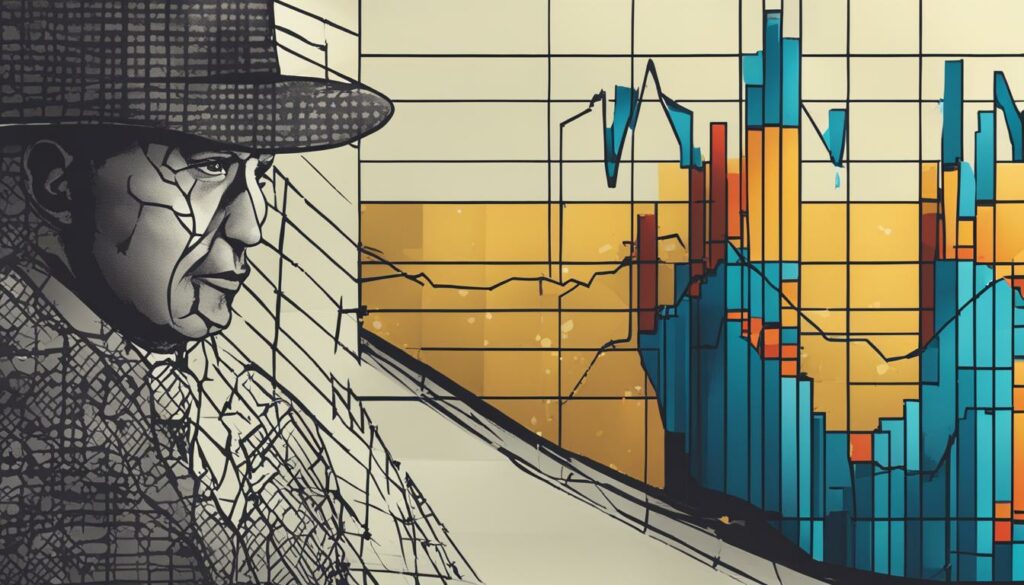
| What is the head and shoulders pattern in stock market analysis? | It is a chart pattern that helps traders identify potential trend reversals in the market. |
|---|---|
| How can I identify a head and shoulders pattern in a stock’s chart? | Look for three peaks and a neckline on the stock’s chart. The middle peak forms the head, and the two surrounding peaks form the shoulders. The neckline is a line connecting the lows of the two shoulders. |
| What does the head and shoulders pattern indicate about the market direction? | When the price breaks below the neckline, it suggests a potential shift from bullish to bearish market direction. |
Potential Risks and Limitations of Relying on the Head and Shoulders Pattern for Market Analysis
While the head and shoulders pattern is a valuable tool in market analysis, it is important to be aware of the potential risks and limitations associated with relying solely on this pattern. Traders should consider these factors and use additional analysis techniques for a more comprehensive approach to market analysis.
One potential risk is the occurrence of false breakouts. This happens when the price briefly breaks below the neckline but quickly reverses back above it. False breakouts can lead to misleading signals and potentially result in losses for traders who rely solely on the head and shoulders pattern.
Another limitation of the pattern is that it may not always accurately predict market reversals. Market conditions and other factors can influence price movements, making it essential to consider other technical indicators and analysis tools to confirm the pattern’s validity.
Traders should also exercise caution when interpreting the head and shoulders pattern in isolation. It is crucial to consider the overall market conditions, including the strength of the trend and the presence of other technical signals, before making trading decisions based solely on the pattern.
“While the head and shoulders pattern is a valuable tool, it is not foolproof. Traders need to be aware of its limitations and consider other factors for a more comprehensive analysis.” – Market Analyst
By acknowledging the potential risks and limitations of relying solely on the head and shoulders pattern, traders can approach market analysis with a more informed and prudent perspective. It is recommended to use the pattern in conjunction with other technical analysis tools and indicators to enhance the accuracy and effectiveness of trading decisions.
| Risks | Limitations |
|---|---|
| False breakouts | May not always predict accurate market reversals |
| Reliance on pattern alone | Non-confirmation by other technical indicators |
Using Other Technical Indicators with the Head and Shoulders Pattern
While the head and shoulders pattern is a powerful tool for identifying potential trend reversals, traders often combine it with other technical indicators to enhance their trading decisions. These indicators provide additional confirmation and insights into market conditions, further strengthening the effectiveness of the head and shoulders pattern.
One common indicator used in conjunction with the head and shoulders pattern is the Moving Average Convergence Divergence (MACD). The MACD measures the relationship between two moving averages and can help traders identify potential changes in market momentum. When the MACD line crosses below the signal line, it can serve as a confirmation signal for a head and shoulders pattern.
Another popular indicator is the Relative Strength Index (RSI). The RSI measures the speed and change of price movements and can indicate overbought or oversold conditions. When the RSI shows a bearish divergence with the price during the formation of a head and shoulders pattern, it can provide additional confirmation of a potential trend reversal.
Other technical indicators that traders may use in conjunction with the head and shoulders pattern include trend lines, Fibonacci retracements, and volume indicators. By combining these indicators with the head and shoulders pattern, traders can gain a more comprehensive view of market conditions and make more informed trading decisions.
Table: Technical Indicators to Use with the Head and Shoulders Pattern
| Indicator | Description |
|---|---|
| Moving Average Convergence Divergence (MACD) | A trend-following momentum indicator that measures the relationship between two moving averages |
| Relative Strength Index (RSI) | A momentum oscillator that measures the speed and change of price movements |
| Trend Lines | Drawn on a chart to connect swing highs or lows, providing insights into market direction |
| Fibonacci Retracements | A technical analysis tool that identifies potential support and resistance levels based on ratios derived from the Fibonacci sequence |
| Volume Indicators | Measure the volume of trading activity, providing insights into the strength of price movements |
By using these technical indicators in conjunction with the head and shoulders pattern, traders can increase their chances of making successful trading decisions. It is important to remember that no single indicator or pattern is foolproof, and traders should always conduct thorough analysis and consider other market factors before entering a trade.
Using the Head and Shoulders Pattern to Make Informed Trading Decisions
Traders utilize the head and shoulders pattern to make well-informed trading decisions by analyzing the potential trend reversals it signifies. Once the pattern is confirmed, traders can strategically enter a position with appropriate risk management measures in place.
One common approach is to enter a short position when the price breaks below the neckline, with a stop-loss order placed above the right shoulder. This helps limit potential losses if the market reverses. Additionally, traders set a profit target by measuring the distance from the neckline to the head of the pattern and applying it downwards from the neckline. This allows traders to capitalize on potential downside moves indicated by the pattern.
Moreover, traders often employ other technical analysis tools and indicators to confirm the head and shoulders pattern and analyze market conditions. Moving averages, trend lines, and oscillators like the Relative Strength Index (RSI) and Moving Average Convergence Divergence (MACD) can provide additional signals and insights into market direction and strength. By combining these tools with the head and shoulders pattern, traders can enhance their decision-making process.
Example:
“The head and shoulders pattern in ABC stock indicates a potential trend reversal from bullish to bearish. After the price broke below the neckline, we entered a short position with a stop-loss order placed above the right shoulder. We set a profit target by measuring the distance from the neckline to the head and applied it downwards from the neckline. Additionally, we confirmed the pattern with the Relative Strength Index (RSI) showing overbought conditions. These factors guided our trading decision and helped manage risk.”
| Trading Decision | Action |
|---|---|
| Pattern Confirmation | Price breaks below neckline |
| Entry | Short position |
| Stop-Loss | Above the right shoulder |
| Profit Target | Distance from neckline to head applied downwards from neckline |
By using the head and shoulders pattern in conjunction with other technical analysis tools and indicators, traders can gain valuable insights and make informed trading decisions. It is important to adapt the strategy based on market conditions and continually monitor price action and indicators for potential changes that may affect the validity of the pattern.

Using the Head and Shoulders Pattern in Options Trading
Options trading offers traders the opportunity to profit from price movements in the underlying stock or index. And yes, the head and shoulders pattern can be a useful tool in options trading. By identifying and confirming the head and shoulders pattern, options traders can implement various strategies to capitalize on potential downside moves in the market.
One common strategy is to buy put options when the price breaks below the neckline in a head and shoulders top pattern. This allows traders to benefit from a potential decline in the underlying asset’s value. The put options provide the right to sell the asset at a predetermined price, regardless of how far the price may fall.
To illustrate the potential profitability of options trading using the head and shoulders pattern, let’s consider a hypothetical example. Suppose a stock exhibits a head and shoulders pattern, with the neckline at $50. Traders could purchase put options with a strike price of $50, giving them the right to sell the stock at that price. If the stock’s price eventually drops below the neckline and continues to decline, the put options could generate substantial profits.
| Strategy | Pros | Cons |
|---|---|---|
| Buying put options | Allows traders to profit from potential downside moves | Options premiums can be expensive and may erode profits if the expected price decline does not occur |
| Selling call options | Generates income through collecting options premiums | Requires traders to hold the underlying asset in case the call options are exercised |
It is important to note that options trading involves additional complexities and risks compared to traditional stock trading. Traders should have a solid understanding of options and their associated risks before incorporating the head and shoulders pattern into their options trading strategies. Additionally, it is advisable to use risk management techniques, such as setting stop-loss orders, to limit potential losses.
In summary, options traders can utilize the head and shoulders pattern to identify potential trend reversals and implement strategies to profit from downside moves in the market. However, it is essential to consider the intricacies of options trading and exercise caution when applying this pattern. By combining technical analysis tools, risk management techniques, and a thorough understanding of options, traders can make informed trading decisions and navigate the dynamic options market.
Conclusion
In conclusion, understanding the head and shoulders pattern is essential for traders looking to identify potential trend reversals in the market. This powerful chart pattern consists of three peaks (the head and shoulders) and a neckline, which serves as a key level of support and resistance. By recognizing the formation of the head and shoulders pattern and confirming it with other technical analysis tools and indicators, traders can make informed trading decisions.
It is important to note that while the head and shoulders pattern is considered one of the most reliable trend reversal patterns, it is not foolproof. Traders should use it in conjunction with other analysis techniques and consider market conditions for more robust market analysis. Additionally, managing potential risks and false breakouts is crucial, as they can impact the effectiveness of the pattern.
Overall, the head and shoulders pattern is a valuable tool for traders seeking to anticipate market turnarounds. By combining technical analysis, risk management, and thorough analysis of market conditions, traders can utilize this pattern to guide their trading decisions and navigate trend reversals with confidence.
FAQ
What is the head and shoulders pattern?
The head and shoulders pattern is a powerful chart pattern that consists of three peaks (the head and shoulders) and a neckline. It is used to identify potential trend reversals in the market.
How can I identify the head and shoulders pattern?
The head and shoulders pattern can be identified by looking for three distinct peaks on a price chart, with the middle peak being the highest (the head) and the two surrounding peaks (the shoulders) being lower. These peaks are connected by a neckline, which is a line drawn through the lows of the two shoulders.
What are the key elements of the head and shoulders pattern?
The key elements of the head and shoulders pattern include the three peaks (head and shoulders) and the neckline. Volume can also play a crucial role in the formation of the pattern, as a decrease in volume during the right shoulder compared to the left shoulder can indicate weakening bullish momentum.
How can I trade using the head and shoulders pattern?
There are various trading strategies that can be used with the head and shoulders pattern. One common approach is to enter a short position when the price breaks below the neckline, with a stop-loss order placed above the right shoulder and a profit target set at a certain distance from the neckline. Another strategy is to wait for a retest of the neckline as resistance after the breakdown and enter a short position at that point.
How effective is the head and shoulders pattern in predicting market turnarounds?
The head and shoulders pattern is considered one of the most reliable chart patterns for predicting market turnarounds. However, its effectiveness depends on various factors such as the strength of the trend and the overall market conditions. It should be used in conjunction with other technical analysis tools and indicators for confirmation.
What is the head and shoulders pattern in stock market analysis?
The head and shoulders pattern is a widely recognized trend reversal pattern used in stock market analysis. It helps traders identify potential trend reversals by looking for three peaks and a neckline on a stock’s chart. When the price breaks below the neckline, it signals a potential shift from bullish to bearish.
Are there any potential risks or limitations to relying on the head and shoulders pattern for market analysis?
Yes, there are potential risks and limitations associated with relying solely on the head and shoulders pattern. One risk is the possibility of false breakouts, where the price briefly breaks below the neckline but then quickly reverses back above it. Market conditions and other factors can also influence price movements, making the pattern less accurate in certain situations.
Can I use other technical indicators with the head and shoulders pattern?
Yes, traders often combine the head and shoulders pattern with other technical indicators to confirm their trading decisions. Some commonly used indicators include moving averages, trend lines, and oscillators such as the Relative Strength Index (RSI) and the Moving Average Convergence Divergence (MACD).
How do traders use the head and shoulders pattern to make informed trading decisions?
Traders use the head and shoulders pattern to identify potential trend reversals and set entry and exit points. When the pattern is confirmed, traders may enter a position with a stop-loss order placed above the right shoulder and a profit target set at a certain distance from the neckline. They also use other tools and indicators to confirm the pattern and analyze market conditions.
Can I use the head and shoulders pattern in options trading?
Yes, options traders can use the head and shoulders pattern by implementing various options strategies, such as buying put options when the price breaks below the neckline in a head and shoulders top pattern. However, options trading involves additional complexities and risks, and traders should have a solid understanding of options before incorporating the head and shoulders pattern into their strategies.
